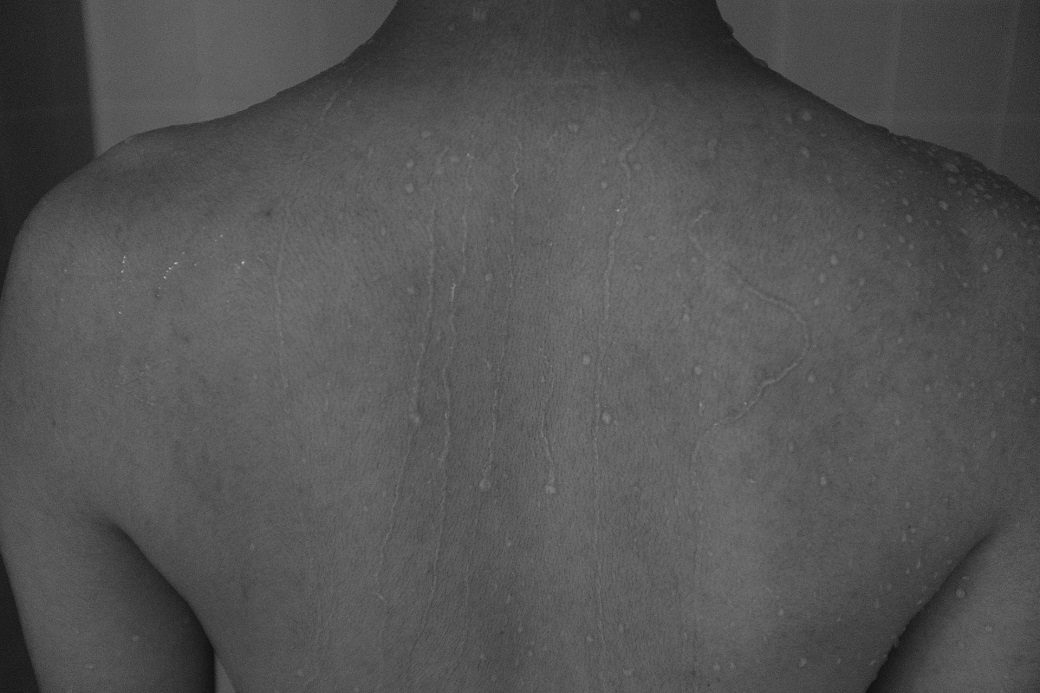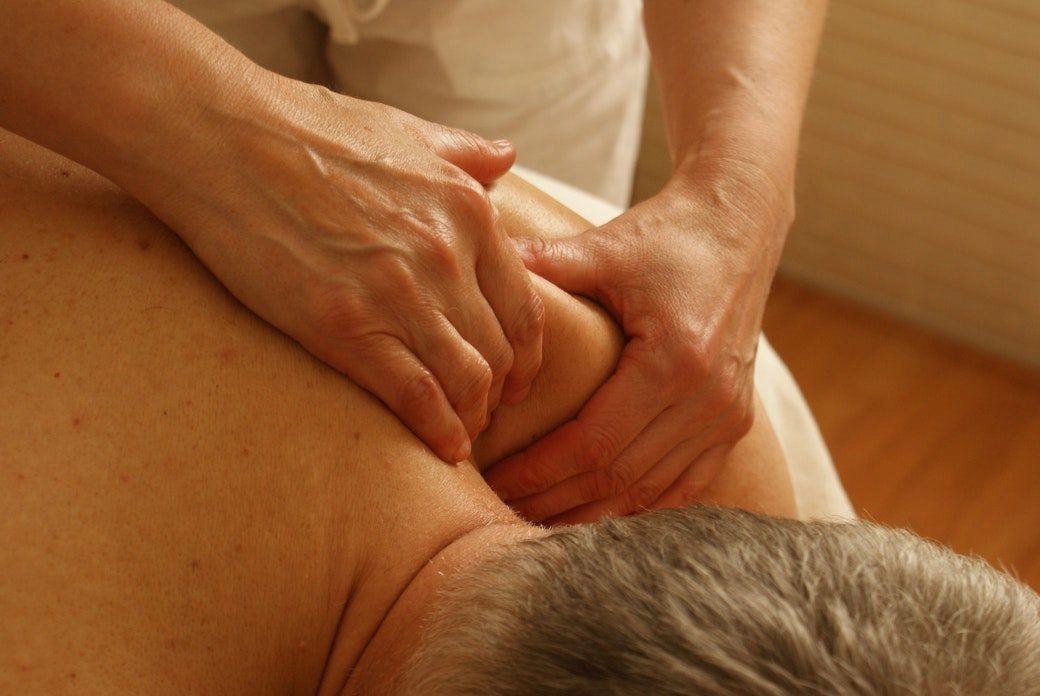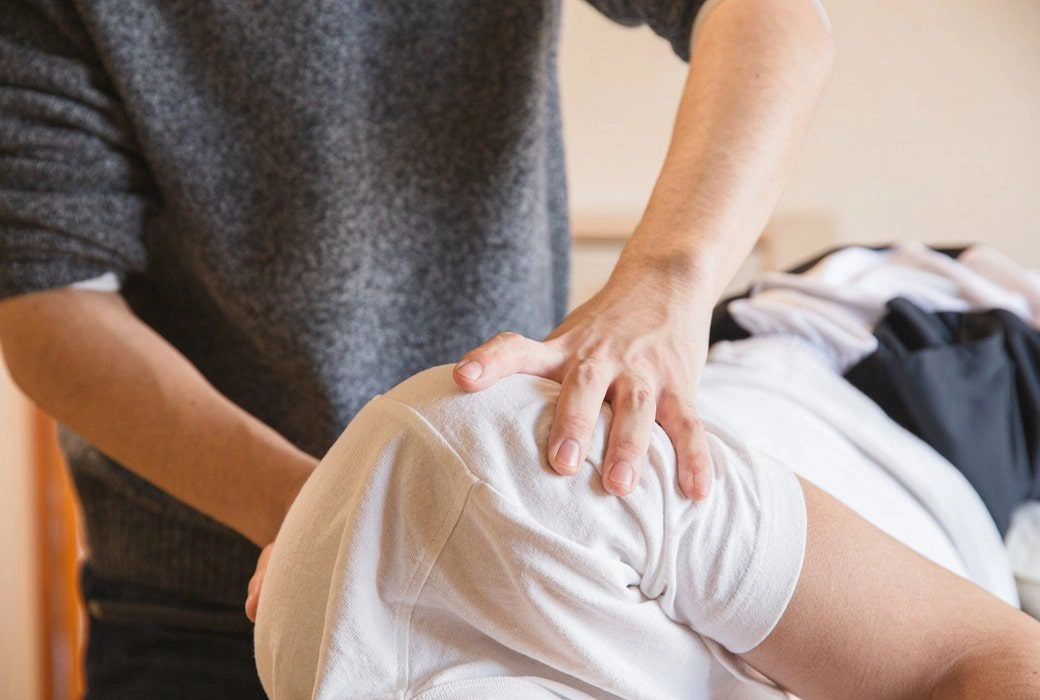Muscle knots are an irritating problem that can happen anywhere in your body, especially on your shoulders.
The good news is muscle knots can be easily released. By using various techniques, such as chiropractic massage, you can heal your body. This article will explore a few other ways you can release one.
Muscle Knot Symptoms

This ailment comes with a variety of unfortunate side effects.
- Shoulder numbness
- Trouble moving your shoulder
- Shooting pain up and down your shoulder
- Swelling
If you ignore these symptoms and don’t treat the muscle knot, it will only cause more severe problems down the road.
Let’s now proceed to the list of natural remedies to get rid of the muscle knot in your shoulder:
1) Use Chiropractic Massage
A great way to release muscle knots in your shoulder is to use chiropractic massage.
Unlike traditional massage, chiropractic massage incorporates regular massage techniques with chiropractic care. This can be very beneficial as it won’t only relax your body, but reduce musculoskeletal problems.
When a muscle knot is found during the massage, the massage therapist will quickly focus on that area.
These motions will also help calm your nervous system. If there’s a malfunction with this bodily system, it can sometimes form muscle knots. For instance, if you suffer from anxiety, you might notice that you have many muscle knots due to tension. Chiropractic massage relaxes the nervous system and encourages it to function correctly.
It will take a few weeks before you start to notice major results. While it requires patience, it’s important to be consistent with your message if you want to heal the muscle knots.

2) Try Heat and Cold Therapy
Heat or cold therapy is yet another option you can try to remove a muscle knot.
Heat therapy will loosen up your muscles. This can be useful if you suffer from tension and need to relax your muscle. You can use a heating pad on the muscle knot or take a shower and direct the warm water toward it.
On the other hand, cold therapy is best to reduce pain and calm inflammation. Because it stops blood flow to the area, cold therapy can prevent the muscle knot from swelling. You can apply an ice pack to your shoulder muscle knot for about 15 minutes. Afterward, take a break and then reapply it a few hours later.
You can alternate between them depending on the severity of your problem.
3) Do Aerobic Exercises
Aerobic exercises will get your body moving. This can encourage toxins to flush out of the muscle knot which might be causing it to be even more inflamed.
There are plenty of aerobic exercises you can do to release this annoying problem. These include:
- Walking
- Swimming
- Jumping jacks
While they can release muscle knots, they could also cause them to develop if you overdo them. This is why it’s important to take breaks and alternate between the exercises.
4) Do Shoulder Stretches
Simple stretches each day can prevent the muscle knot from building up. It can also relax your body which can prevent the tense muscle fibers from growing. You’ll also notice that it will heal any neck pain you have which can prevent potential muscle knots in your shoulder.
Here are three stretches you can use to release a shoulder muscle knot.
4.1. Upper Trapezius Stretch
This stretch releases tension around your trapezius. Because of its size, this muscle is susceptible to muscle knots around your shoulder and neck.
To do an upper trapezius stretch, first, sit with proper posture. Then, put one hand behind your back. Take your other hand and wrap it around the top of your head so that it touches the edges of your ear. Gently pull your head down until you feel a slight pull in your shoulder. Hold this position for about 30 seconds and then release. Repeat with the other side.
4.2. Shoulder Towel Stretch
The shoulder towel stretch can help restore your shoulder’s range of motion. This is because it moves your shoulder muscles closer to your body which can release pressure around it.
To begin, take a clean towel and hold one end of it in each hand behind your back. Try to pull the towel up with your top hand. As you do this, you should feel a slight pull. If not, carefully tug the towel a bit more until you do. Hold the pose for 20 seconds and then release. Switch your hands and repeat this process.
4.3. Triceps Shoulder Stretch
This simple yoga stretch not only assists with improving flexibility but can stretch out muscle knots. It will also provide the affected area with fresh blood which can remove toxins that could be making it harder for the knot to heal.
The first step for this stretch is to stand with the correct posture. Slowly bring one arm behind you and bend it so your palm is placed between your shoulders. Use your other hand to gently tug on your elbow. You should feel the shoulder muscle being released. Hold this pose for 15 seconds and then switch to your other arm.
5) Try Acupuncture
Sticking needles into the muscle knot? It surprisingly could work. Pressing a thin needle into the center of the knot, it will shock the tense area. It will then start to deflate while loosening up the tight fibers.
Acupuncturists might also press a few needles into surrounding trigger points. While they might not have muscle knots, many times they connect together. If you calm an attached point, it could encourage the muscle knot to heal faster.
Keep in mind that after your session, you might feel a bit of soreness. This is normal and is a sign of the area recovering.
6) Rest
Sometimes muscle knots are caused by extreme movements. If you don’t let your body rest, it will only encourage the knot to get bigger and more painful.
If you notice or feel a muscle knot in your shoulder, take a break. Find ways for you to relax that don’t require shoulder movements. This could be by practicing meditation or sitting and listening to music. You might also want to take occasional naps so your body has time to heal.
7) Drink Tart Cherry Juice
A unique way to release muscle knots in your shoulder is to drink tart cherry juice. This liquid has been shown to be a natural muscle relaxant because it reduces inflammation. The tart cherry juice will flush the area with antioxidants that will relax it and help it heal. It could reduce the pain and tension you feel around it.
Keep in mind that you must drink tart cherry juice, not regular cherry juice. While there are health benefits to the latter, it’s often filled with sugar. Tart cherry juice is in its purest form so it contains more vitamins and minerals.
Muscle knots can be a pain, especially when they’re located in your shoulder. By keeping these tips in mind, you can safely release one. It is best to consult your chiropractor.
What Causes Muscle Knots?
Muscle knots are small pieces of tense muscle that form a hard layer over an area. Most of the time, they develop because they are trying to protect the injured or strained muscle. If the area doesn’t heal correctly, it could cause further tension and cause the section around the muscle knot to be sore. Over time, it could also limit your range of motion.
Do Muscle Knots Go Away On Their Own?
Muscle knots won’t go away on their own. Once they develop, they will continue to build because they are trying to protect the area. To release it, you’ll need to contract your shoulder muscle and work to break up its fibers.
To learn more about your condition, visit your local massage therapist at Better Health Anchorage in Alaska.
References
https://bjsm.bmj.com/content/40/8/679.short
http://www.hmieducation.com/members/PDF/Helms%20Overview%20of%20Med%20Acu.pdf









